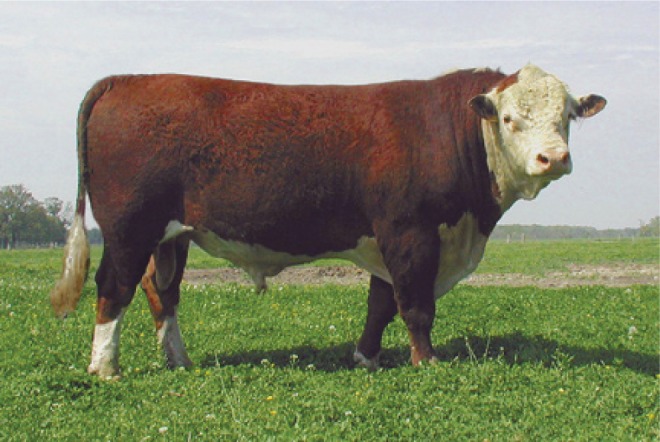Printed diode connects Internet-of-things with mobile networks

All-printed e-tag activated by placing a call from a mobile phone. Image courtesy of Peter Modin (Linköping University, Linköping, Sweden) and Acreo Swedish ICT.
In the future, physical objects may interact with humans through a proposed Internet-like network known as the Internet-of-things (IoT). Although printed electronic labels and stickers represent a strategy for providing unique identifiers and wireless access to devices on the IoT, printed rectifiers currently operate at frequencies that are too low to enable direct communication and powering between mobile phones and printed e-tags. Negar Sani et al. (pp. 11943–11948) describe an all-printed diode—a key component in many circuits and the most commonly used rectifier—that operates at 1.6 GHz, within the UHF range used by smartphones. The diode, the authors report, was created using two stacked layers of silicon and niobium silicide particles, and can be printed on a flexible substrate at low temperature and in ambient atmosphere. The authors combined printed diodes with antennas and an electro-chromic display to construct an all-printed e-tag and then updated the display using a harvested signal from a GSM mobile phone. The findings demonstrate a communication pathway for printed electronics within IoT applications, according to the authors. — T.J.
Pathogen evolution and recent epidemics
Emerging diseases such as enteric fever are partly characterized by a rapid increase in incidence or geographic range and are often attributed to evolutionary forces that increase the virulence or fitness of pathogens. However, evidence for recently enhanced virulence or fitness of human bacterial pathogens is scant. Zhemin Zhou et al. (pp. 12199–12204) analyzed 4,584 DNA sequence variations in 149 genomes of Salmonella enterica serovar Paratyphi A—a bacterium that causes enteric fever. Using phylogenetic methods and statistical models, the authors found that Paratyphi A originated about 450 years ago, and seven distinct lineages have spread globally since the mid-19th century. Mutations that may have temporarily increased fitness by conferring drug resistance, enhancing virulence, or improving metabolism occurred continuously during the pathogen’s evolution. However, most genetic changes were transient because these mutations reduced bacterial fitness and were rapidly removed by evolution. As a result, the Paratyphi A genome has not changed dramatically over the centuries. According to the authors, the findings suggest that many bacterial epidemics and pandemics in human history might be due to environmental changes rather than the evolution of virulent organisms. — J.W.
Refining model systems for hepatitis B
An estimated 400 million people worldwide are chronically infected with hepatitis B, a small DNA virus that selectively targets human liver cells. Efforts to study the virus have been limited by the lack of suitable model systems. Amir Shlomai et al. (pp. 12193–12198) report that micro-patterning and co-culturing (MPCC) of primary human hepatocytes with fibroblasts maintains hepatocyte phenotype and function over several weeks, and the cultures support hepatitis B infection and replication. However, the donor cells required to populate this system are highly variable, expensive, and available in limited quantities. To provide a renewable and genetically tractable cell system, the authors demonstrate that induced pluripotent stem cell-derived hepatocyte-like cells (iHeps) support prolonged hepatitis B infection in vitro. The authors found that for both MPCC and iHeps, blocking the hepatocyte innate immune responses can further enhance hepatitis B infection. Moreover, iHeps acquire the capacity to support viral transcription and infection during distinct stages of cellular differentiation. According to the authors, the findings highlight the usefulness of MPCC and iHep systems in studies of virus–host interactions and antiviral drug testing. — A.G.
Environmental costs of meat, egg, and dairy production

Polled Hereford bull in Kentucky. Image courtesy of Wikimedia Commons/Dogwood Farm and Studios (LaCenter, Kentucky).
Feed production for livestock constitutes a significant source of greenhouse gas emissions and water pollution, with environmental costs varying by livestock type. Gidon Eshel et al. (pp. 11996–12001) compared the environmental impacts of dairy, beef, poultry, pork, and egg production per calorie consumed in the United States. Using government data, the authors calculated the land area, water, and reactive nitrogen fertilizer requirements for feed consumed by the five livestock classes. The authors found that impacts of dairy, poultry, pork, and eggs are mutually comparable within a factor of two. Beef, however, requires 28 times more land, 11 times more irrigation water, five times more greenhouse gas emissions, and six times more reactive nitrogen fertilizer than the corresponding average requirements of the other four livestock categories. The authors further compared livestock impacts with the environmental burdens of potato, wheat, and rice production, and found that the three crops, on average, required two to six times less land, greenhouse gas emissions, and reactive nitrogen per calorie consumed than nonbeef livestock. Understanding the impacts of different classes of livestock may empower consumers and policymakers to mitigate environmental burdens through diet choice and agricultural policy, according to the authors. — P.G.
Parsing the social transmission of fear
Researchers have long pondered the apparent inheritance of emotional trauma, but the underpinnings of this phenomenon remain elusive. Jacek Debiec and Regina Sullivan (pp. 12222–12227) modeled the cross-generational transmission of fear in rodents and report that maternal responses to a conditioned fear odor can trigger a powerful and enduring learned response during infancy. The authors conditioned nonpregnant female rats to fear the scent of peppermint by pairing the odor with a mild electric footshock. After giving birth, the females were reexposed to the odor in the presence of their newborn pups. Exposure to the frightened mother boosted pups’ levels of the stress hormone corticosterone. Analysis of the pups’ neural activity revealed that a mother’s expression of fear can activate the infants’ lateral and basal amygdala, regions involved in fear conditioning. Interestingly, pups exposed to peppermint and the odor of their frightened mother, even in the mother’s absence, acquired an aversion to peppermint, suggesting the role of maternal alarm pheromone communication in fear transfer. The authors posit that these socially transferred memories represent a seemingly unique component of maternally transmitted emotional learning. According to the authors, the findings could inform the development of therapeutic and preventive approaches for socially transmitted fears. — A.G.
Oxytocin and social functioning in children
Oxytocin promotes social behavior in animals and humans, and studies suggest that impaired regulation of oxytocin may be an underlying cause of autism spectrum disorder (ASD) in humans. Karen Parker et al. (pp. 12258–12263) measured blood oxytocin levels in 193 children between the ages of 3 and 12 years who had been diagnosed with ASD, were siblings of ASD-diagnosed children, or were unrelated children unaffected by ASD. Blood oxytocin levels varied among the children and low levels correlated with impaired social functioning, but low oxytocin levels were not restricted to children with ASD. Comparison of siblings with and without ASD revealed that oxytocin levels in the blood are 85.5% heritable. An analysis of small sequence variations in the oxytocin receptor gene, OXTR, in the children also revealed that although carriers of OXTR mutations exhibited impairments in emotion recognition and social functioning, the phenomenon was not limited to children with ASD. According to the authors, the results suggest that oxytocin may influence social behavior similarly among family members, and that oxytocin may influence social functioning in all individuals, regardless of ASD status. — J.P.J.


